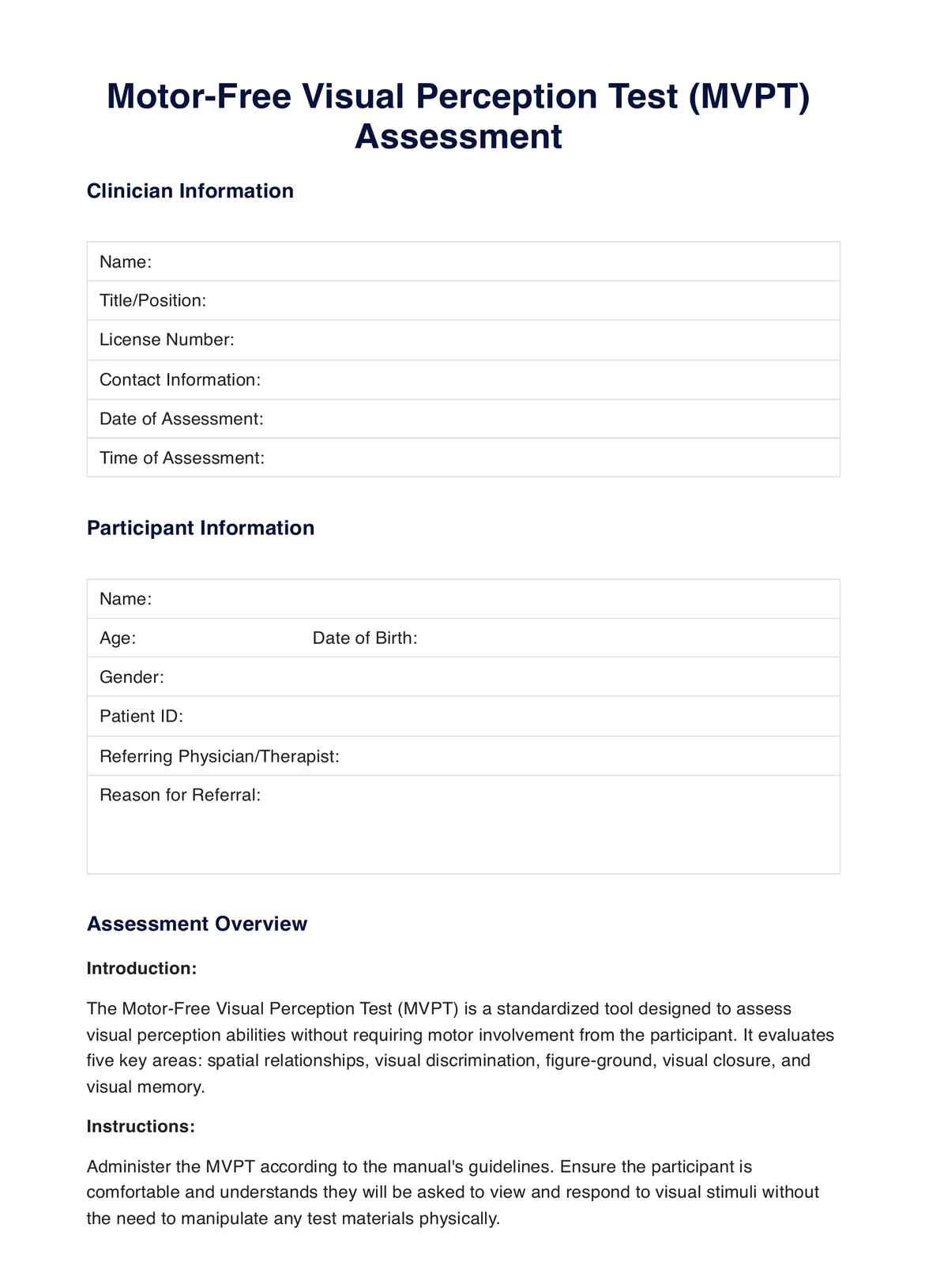MVPT should be administered based on clinical need, typically during initial assessments of occupational therapy and periodically to monitor progress after interventions.

Unlock the secrets of visual perception with our MVPT guide. Discover how to interpret results for enhanced daily functioning and academic success.
MVPT should be administered based on clinical need, typically during initial assessments of occupational therapy and periodically to monitor progress after interventions.
Yes, MVPT is designed for a wide range of age groups, with normative data available for children through adults, making it a versatile tool for assessing visual perception across the lifespan.
While MVPT is user-friendly, professionals administering the test should have a background in visual perception and be familiar with standardized test administration procedures to ensure accuracy and reliability.
EHR and practice management software
*No credit card required
Free
$0/usd
Unlimited clients
Telehealth
1GB of storage
Client portal text
Automated billing and online payments